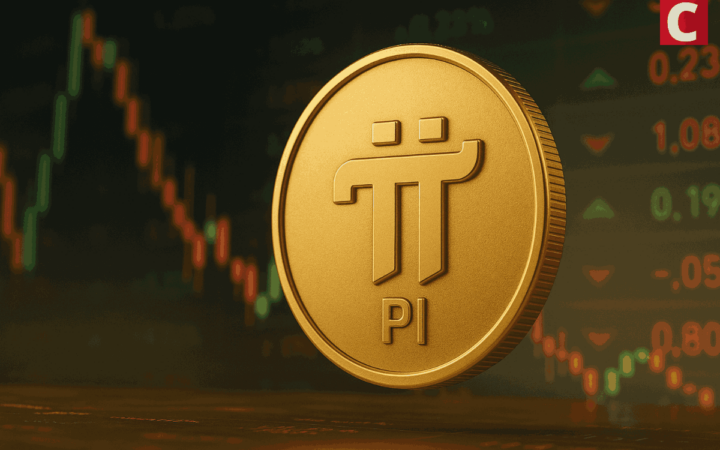South Korean Stablecoin Regulation: A Crucial Step Towards Financial Stability
BitcoinWorld
South Korean Stablecoin Regulation: A Crucial Step Towards Financial Stability
Stablecoins have emerged as a cornerstone of the cryptocurrency market, bridging the gap between volatile digital assets and traditional fiat currencies. Their growing adoption, however, has also highlighted a pressing need for robust oversight. South Korea is now taking a decisive and significant step in this direction. A new bill is set to be proposed in the National Assembly, aiming to bring these digital assets under the country’s existing Foreign Exchange Transactions Act. This move represents a crucial development in South Korean stablecoin regulation, signaling a proactive approach to managing the evolving digital financial landscape.
Understanding the Proposed South Korean Stablecoin Regulation
What exactly does this proposed legislation entail? According to Yonhap News, Lawmaker Park Seong-hoon of the People Power Party is sponsoring an amendment to the Foreign Exchange Transactions Act. The core of this proposal is to legally define stablecoins as a ‘means of payment’ under Article 3, Paragraph 1 of the act. This simple yet profound reclassification places stablecoins on the same regulatory footing as traditional government notes, banknotes, and coins.
- Legal Definition: Stablecoins will be recognized as a legitimate ‘means of payment’.
- Regulatory Parity: They will be subject to the same rules as conventional currencies.
- Legislative Effort: This move seeks to close existing legal gaps.
This specific proposal for South Korean stablecoin regulation aims to ensure that these digital assets operate within a clear, established legal framework, preventing their use in unregulated or illicit financial activities.
Why is South Korean Stablecoin Regulation Becoming a Priority?
The impetus behind this urgent stablecoin regulation is multifaceted, primarily driven by concerns over financial integrity and consumer protection. As stablecoins gain traction, so too does the potential for their misuse. The proposed bill is a direct response to the risks associated with an unregulated stablecoin market, which could be exploited for various illicit activities.
- Preventing Illicit Activities: A primary goal is to combat money laundering.
- Combating Tax Evasion: The regulation will make it harder to evade taxes using stablecoins.
- Closing Legal Loopholes: It addresses ambiguities in current financial laws regarding digital assets.
- Ensuring Financial Stability: By integrating stablecoins into existing frameworks, the government aims to mitigate systemic risks.
This proactive approach by South Korea reflects a growing global trend among regulators to bring digital assets under stricter supervision, ensuring transparency and accountability in the rapidly evolving digital economy. The absence of clear rules has long been a challenge, and this move provides much-needed clarity.
What Are the Broader Implications of This Stablecoin Regulation?
The new South Korean stablecoin regulation could have significant implications for both the domestic and international cryptocurrency markets. For users, it offers a heightened sense of security and legitimacy, knowing that their stablecoin transactions are backed by legal oversight. For stablecoin issuers and related businesses, however, it will introduce new compliance burdens and operational requirements.
Potential Benefits:
- Increased Trust: Greater confidence among users and institutions in stablecoin transactions.
- Enhanced Consumer Protection: A clearer legal recourse in case of disputes or fraud.
- Market Integration: Smoother integration of stablecoins into the broader financial system.
Potential Challenges:
- Compliance Costs: Stablecoin issuers may face significant costs to meet new regulatory standards.
- Innovation Impact: Some fear that stringent rules could stifle innovation in the crypto space.
- Market Dynamics: The regulatory shift could alter market liquidity and the competitive landscape for stablecoins in South Korea.
Balancing these benefits and challenges will be crucial as the legislation moves forward, shaping the future of digital finance in the region.
How Does South Korean Stablecoin Regulation Compare Globally?
South Korea is not alone in its pursuit of comprehensive stablecoin regulation. Jurisdictions worldwide are grappling with how to effectively oversee these digital assets. The European Union, for instance, has introduced its landmark Markets in Crypto-Assets (MiCA) regulation, which includes extensive provisions for stablecoins. In the United States, discussions are ongoing, with various proposals aimed at defining and regulating stablecoin issuers.
This global push highlights a shared understanding among policymakers that stablecoins, due to their potential for widespread use and their peg to traditional currencies, require a distinct regulatory framework. South Korea’s move to categorize them under existing foreign exchange laws demonstrates one approach to this challenge, leveraging established legal mechanisms rather than creating entirely new ones. This proactive approach to South Korean stablecoin regulation positions the nation among the leaders in establishing a secure and regulated digital asset environment.
A Future of Regulated Digital Finance
The proposed bill for South Korean stablecoin regulation marks a pivotal moment for the country’s digital asset landscape. By formally recognizing stablecoins as a ‘means of payment’ and bringing them under the Foreign Exchange Transactions Act, South Korea is taking a decisive step towards enhancing financial stability and integrity. While it promises greater security and transparency, it also presents challenges for innovation and market participants. The outcome of this legislative effort will undoubtedly set a precedent for how other nations might approach the complex task of integrating digital currencies into traditional financial systems, paving the way for a more secure and regulated future for digital finance.
Frequently Asked Questions (FAQs)
What is the Foreign Exchange Transactions Act?
The Foreign Exchange Transactions Act is a South Korean law that regulates transactions involving foreign currencies and international payments. Its purpose is to maintain stability in the foreign exchange market and ensure sound international financial transactions.
Who is Lawmaker Park Seong-hoon?
Lawmaker Park Seong-hoon is a member of South Korea’s National Assembly, representing the People Power Party. He is the legislator proposing the bill to regulate stablecoins under the Foreign Exchange Transactions Act.
What are stablecoins?
Stablecoins are a type of cryptocurrency designed to maintain a stable value relative to a specific asset or a basket of assets, such as fiat currency (e.g., the US dollar) or gold. They aim to combine the benefits of cryptocurrencies, like fast transactions and global reach, with the stability of traditional assets.
Why are stablecoins being regulated differently from other cryptocurrencies?
Stablecoins are often regulated differently due to their direct peg to traditional assets, which gives them a more direct link to the conventional financial system. This link means they can pose different risks, particularly concerning financial stability, consumer protection, and their potential use in illicit activities, necessitating specific regulatory frameworks.
What are the main concerns driving this stablecoin regulation?
The primary concerns driving this regulation include preventing money laundering, combating tax evasion, and closing legal loopholes that could allow stablecoins to be used for illicit financial activities. Regulators also aim to protect consumers and maintain overall financial stability.
Did you find this article insightful? Share your thoughts and help spread awareness about the evolving world of cryptocurrency regulation! Connect with us on social media and join the conversation.
To learn more about the latest crypto market trends, explore our article on key developments shaping stablecoins institutional adoption.
This post South Korean Stablecoin Regulation: A Crucial Step Towards Financial Stability first appeared on BitcoinWorld.
You May Also Like

Why Is Pi Network Token (PI) Up 22% on Oct. 29?

German VDMA cautions U.S. tariff expansion will impact over 50% of machine exports

BNB Price Drops 2% as the Dex Volume Tumbles Cautioning Further Downside
Highlights: The BNB price is down 2% to $1111.46, despite the trading volume spiking 26%. The BNB on-chain demand has slipped, with the open interest plummeting 3% showing a drop in demand. The technical outlook shows a tight tug-of-war, with the bulls attempting to overcome resistance zones. The BNB price is down 2% today, to trade at $1111.46. Despite the plunge, the daily trading volume has soared 26% showing increased market activity among traders. However, BNB Chain has seen declining network activity, with the open interest plummeting, signaling a drop in demand. On Chain Demand on BNB Cools Off The BNB Chain is in a state of cooldown of network activity, which indicates low on-chain demand. In most instances, when a network fails to ensure large volumes or revenues, it means that there is low demand or outflows to other networks. BNB DeFi Data: DeFiLlama According to DeFiLlama data, the volume of the Decentralized Exchanges (DEXs) is down to at least $2.12 billion in comparison to the high of $6.313 billion on October 8, which also means low on-chain liquidity. On the other hand, Coinglass data shows that the volume of BNB has grown by 3.97% to reach $4.95 billion. However, the open interest in BNB futures has dropped by 3.36% to reach $1.74 billion. This reduction in open interest is an indication of a conservative stance by investors since the number of new positions being opened is low. This could be an indication that investors are not so sure about the short-term price outlook. BNB Derivatives Data: CoinGlass Meanwhile, the long-to-short ratio is sitting at 0.9091. This shows that the traders are undecided on BNB price’s next move, as it sits below 1. BNB Price Moves Into Consolidation The chart displays the BNB/USD price action on a 4-hour timeframe, with the token currently hovering around $1111.46. The 50-day Simple Moving Average (SMA) is at $1113, while the 200-day SMA sits at $1129, cushioning the bulls against upside movement. The price has mostly been trending below both SMAs, indicating that the bears are having the upper hand. The BNB trading volume is up, soaring 26%, signaling the momentum is real. On the 4-hour chart, BNB is trading within a consolidation channel. In such a case, this pattern may act as an accumulation period, giving the bulls hind wings to break above resistance zones. BNB/USD 4-hour chart: TradingView Zooming in, the Relative Strength Index (RSI) sits at 44.15, below the 50 level. This shows weakening momentum in the BNB market, and might lead to the RSI plunging to the oversold region if the bulls don’t regain control. In the short term, the BNB price could move up to $1113 resistance and flip it into support. A close above this zone will see the bulls target $1126 resistance, giving the bulls strength to reclaim the $1230 mark. Conversely, if the resistance zones prove too strong, a dip towards $1012 could be plausible. In such a case, this could be a prime buy zone for the risk-takers. In the long term, if the token keeps the hype alive, the bulls may reclaim the $1375 high or higher. eToro Platform Best Crypto Exchange Over 90 top cryptos to trade Regulated by top-tier entities User-friendly trading app 30+ million users 9.9 Visit eToro eToro is a multi-asset investment platform. The value of your investments may go up or down. Your capital is at risk. Don’t invest unless you’re prepared to lose all the money you invest. This is a high-risk investment, and you should not expect to be protected if something goes wrong.